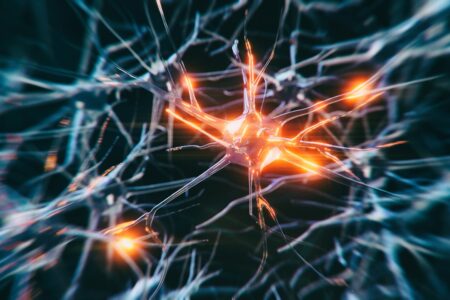Coffee consumption may reduce the risk of death from sedentary lifestyles.
Getting plenty of exercise each day is a necessary component of living a healthy lifestyle. In order to keep their hearts healthy, adults should engage in at least 150 minutes of heart-pumping physical activity per week, according to the American Heart Association. Based on previous studies, leading a sedentary lifestyle can negatively impact one’s general health and raise the chance of several illnesses, such as high blood pressure, obesity, osteoporosis, cancer, and heart disease. Regular inactivity has also been connected to mortality from cardiovascular disease and other causes.
According to recent research that was published in the journal BMC Public Health, coffee consumption may be able to mitigate some of the negative consequences associated with a sedentary lifestyle. Researchers at Soochow University in Suzhou, China, have found that compared to sitting for less than four hours a day, sitting for more than eight hours a day was associated with a higher risk of mortality from heart disease and other causes. But compared to those who did not drink coffee, those who drank the most seemed to have a lower risk of dying. Researchers examined information regarding daily sitting time and coffee use from over 10,700 adults in the United States who took part in the 2007–2018 National Health and Nutrition Examination Survey for this study.
The corresponding author of this study, Bingyan Li, PhD, professor in the Department of Nutrition and Food Hygiene in the School of Public Health at the Medical College of Soochow University in Suzhou, China, told Medical News Today that “in recent years, increased TV viewing and computer use, as well as less physically demanding jobs, have led people to become more sedentary in their daily lives.” “Even if people meet recommended levels of physical activity, prolonged sitting might have a negative impact on metabolic health. The risk of cardiovascular disease, as well as all-cause and cardiovascular mortality, is linked to sedentary behavior, which is increasingly becoming recognized as a possible predictor of negative health consequences. Furthermore, the world is heavily financially burdened by these unfavorable health outcomes.
Li said, “Yet, due to the potent antioxidant qualities of coffee components, coffee is one of the most widely consumed drinks in the world and among Americans. Growing research also suggests that regular coffee consumption can reduce morbidity and mortality from chronic diseases.” “Therefore, coffee may have a significant impact on public health even if it has a small health-boosting effect.” Li and her research team found that compared to individuals who sat for less than four hours a day, sitting for more than eight hours a day was associated with a higher risk of mortality from cardiovascular disease as well as other causes.
As coffee intake was taken into account, researchers discovered that individuals who drank the most coffee had lower mortality rates from cardiovascular disease and all causes as compared to those who drank less. Additionally, those who did not drink coffee and sat for six hours or more a day had a 1.6-fold increased risk of dying from all causes compared to those who drank coffee and sat for less than six hours a day, according to research. According to one study, sitting for extended periods of time without breaks seems to worsen inflammation and affect glucose metabolism, Li added.
Because sedentary behavior increases proinflammatory markers while lowering anti-inflammatory markers, it is an important and independent predictor of inflammation. Furthermore, she noted that earlier research had demonstrated how sedentary behavior affects skeletal muscle metabolism and that metabolic risks rose by 39% for every hour spent sitting or lying prone during the waking hours. Compared to sedentary activity, coffee consumption has numerous advantages for boosting adult overall survival. Drinking coffee lowers the chance of developing metabolic syndrome, which exacerbates inflammation. Numerous studies have revealed an inverse connection between adult cardiovascular disease mortality and coffee consumption, both overall and by cause.
Yu-Ming Ni, MD, a board-certified cardiologist and lipidologist at MemorialCare Heart and Vascular Institute at Orange Coast Medical Center in Fountain Valley, California, advised readers to use caution when interpreting the study’s results after reading it. Since this is an association research, our goal is to determine how coffee and cardiovascular disease are related. However, when examining correlations, it can be challenging to determine whether coffee use is the cause of the decline in heart disease or whether there are other factors that the coffee drinker is doing to lower their risk of cardiovascular death. That, then, is most likely the key lesson to be learned from this.
“I think it’s critical that we acknowledge that lifestyle decisions are the cornerstone of optimal health. The eight lifestyle decisions and medical treatments that are most strongly linked to excellent health are known as the “Essential 8,” according to the American Heart Association. Furthermore, only a very tiny percentage of Americans adhere to all eight criteria. Therefore, in my opinion, there is always room to research healthy habits and behavior modification as a means of maintaining your health and lowering your risk of heart disease. And one of the behaviors that we have been researching for a while is the intake of coffee. They also discussed this study with Monique Richard, MS, RDN, LDN, owner of Nutrition-In-Sight and registered dietitian nutritionist.
According to Richard, it’s critical to keep in mind that a variety of things can affect one’s ability to profit from coffee, tea, or any other beverage. “The bean’s origin, quality, processing method, additions (preservatives, cream, sugar), amount and frequency of consumption, and the person’s sensitivity to caffeine, present health (prescription drugs, high blood pressure, cardiac issues), and metabolic reaction to it,” she explained. “The current [recommended daily limit] is three to five 8-ounce cups per day, or approximately 400 mg of caffeine; however, tolerance may vary greatly among individuals.”
Looking at additional benefits of coffee consumption that people might find counteract the negative effects of being sedentary, Richard mentioned that caffeine from coffee may act on the central nervous system to increase alertness and may also have a feel-good, mood-boosting effect on an individual. She went on, “It might give mental acuteness and clarity.” But there are a few drawbacks to take into account as well. A few substances in coffee, particularly if unfiltered, have the potential to increase cholesterol, induce jitters, anxiety, GERD, GI problems, palpitations, or other cardio-metabolic markers including homocysteine levels. Richard offered the following advice to readers who might be thinking about consuming coffee for its possible health benefits: Consult a licensed dietitian nutritionist to determine whether or not coffee is right for you. If you’re not enjoying it already, don’t feel compelled to start adding it. The benefits of an unsweetened coffee with low-fat milk or no added sugar won’t come from a 32-ounce cold brew with extra vanilla and caramel syrup. Assess your intake and ask yourself, “If I am sedentary for six to eight hours, how can I move more every hour, every day?
Medications that have been suggested by doctors worldwide are available here
https://mygenericpharmacy.com





